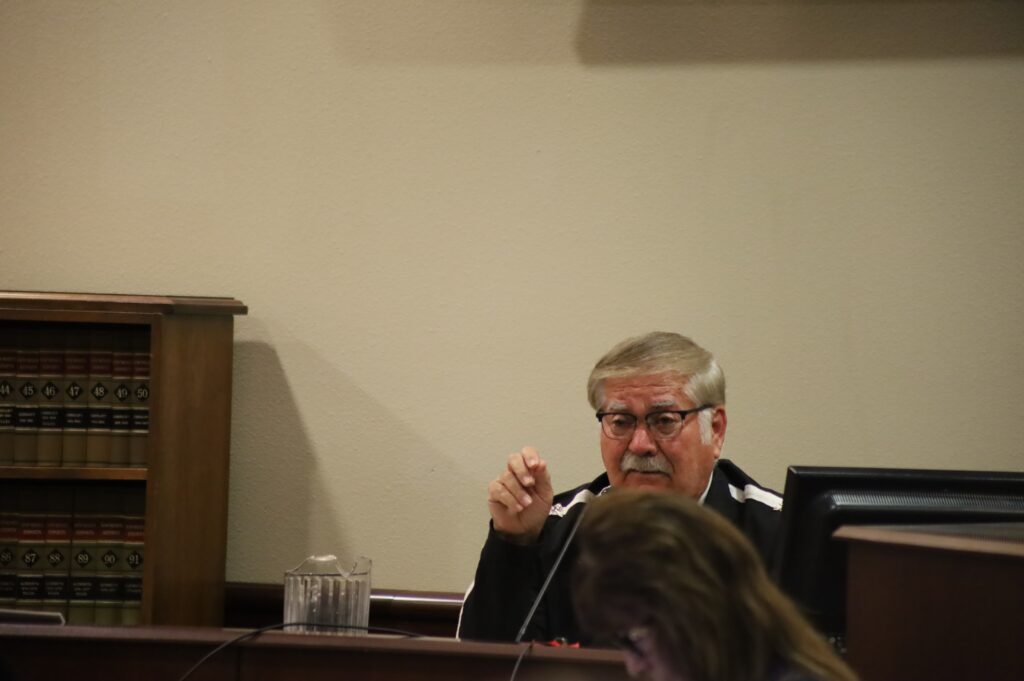Virgil Vigil, president of Union Protectiva de Santa Fe, begins to cry during his testimony in support of The Soldier’s Monument that was removed from the Santa Fe Plaza. Vigil filed the lawsuit against the city and opened testimony on day one of the civil trial on the matter. (Photo by Shaun Griswold / Source NM)
Opposing sides in the trial over the future of a controversial monument in New Mexico’s capital city opened Thursday morning with witness testimony about the statue’s significance to Santa Fe and the region.
Attorney Shellie Ann Patscheck gave the opening statement for the plaintiffs. She said they intend to show they have an interest in protecting the Santa Fe Plaza, the historical district around it, and the monuments in the city.
Stanley Harris gave the opening statement for the defense. He said while Mayor Alan Webber and the city government are at the center of people’s passionate views of a complicated history, the court is supposed to judge one legal issue governed by one part of state law: whether the mayor’s emergency proclamation on June 18, 2020 was legal.
The remainder of Thursday morning and the rest of the afternoon was expected to be taken up by witness testimonies. The trial is expected to continue through the end of the day on Friday.
Visitors take a selfie in front of the stand that held the former Soldier’s Monument on the Santa Fe Plaza, Sept. 12, 2024. (Photo by Shaun Griswold / Source NM)
The first witness was Virgil Vigil, president of the Union Protectiva de Santa Fe and the main plaintiff in the case.
Vigil shared about his own 30 years of military service that began in the Vietnam War, the history of military service among the roughly 350 members of his fraternal organization suing Santa Fe, and the Soldier’s Monument’s significance to his identity as an American soldier.
State district court to weigh the future of monument in Santa Fe
“I take it very personal (sic) when people put down the soldiers, when they are not looked upon in an honorable way,” Vigil said, his voice breaking on the witness stand. “I take it personally when we destroy monuments.”
The second witness was David Rasch, a museum collections consultant and a former historic preservation officer for the city of Santa Fe. He discussed the obelisk’s aesthetic, cultural and historic significance.
He said the Soldier’s Monument was originally built to commemorate American soldiers who fought both in the U.S. Civil War, and some of the earlier so-called “Indian Wars” against Indigenous tribes.
One of four bronze plaques installed at each compass direction on the obelisk’s base included offensive language which dedicated the monument to “the heroes” who fought “savage Indians.”
“The verbiage on them is probably the source of the unrest in our community,” Rasch said.
SUPPORT NEWS YOU TRUST.
GET THE MORNING HEADLINES DELIVERED TO YOUR INBOX

